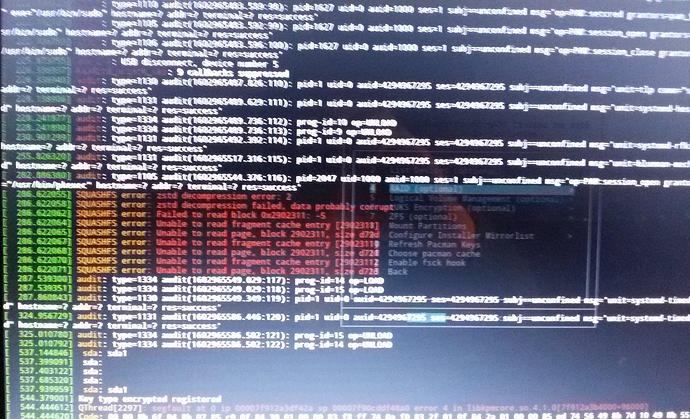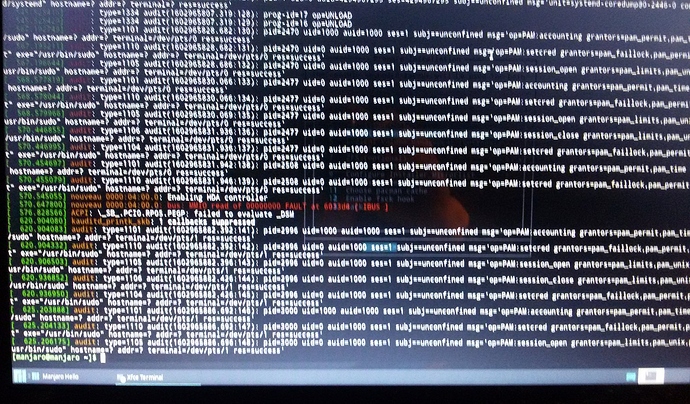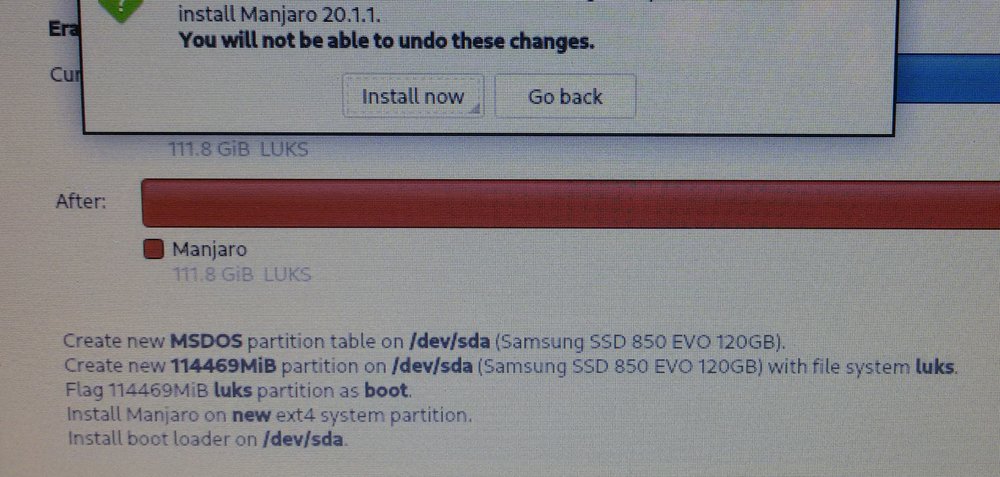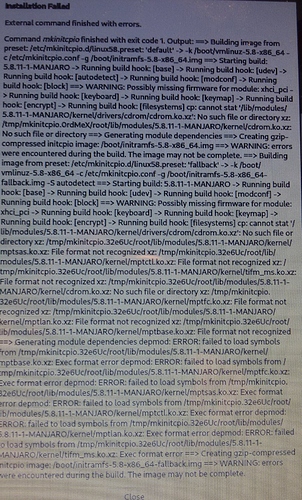Hello, the newly installed OS Manjaro is nto booting, the BIOS just continuously prompts boot source when is elect HDD. But when i insert USB install disk, and in it select to boot from HDD, it asks LUKS passphrase, but than says something about invalid LUKS partition.
I read that possibly i need to disable UEFI and Secure boot. I tried all this and neatly all bios options.
My aim is to install BTRFS filesystem, LUKS encryption, no swap.
I tried partition scheme like the one on image in first post: Architect: noob uncertainty regarding SWAP and LVM
I am not sure if it matter under which BIOS config (UEFI, AHCI/IDE/Secure boot) i install the OS when i change it then before first boot.
By the way, first install attempt silently ended (just after it created luks partition in the install beginning, i have seen some errors in dmesg:
the third installation (default -automatic one, no cust. partition) luks, ext4:
finished, but the boot not worked, it complained about no such cryptodisk found.
Fourth and fifth default, ext4 luks failed failed installation, filed with error:
Btw computer not wanting to boot some instances, only thru usb flash disk, then select from boot HDD, and then it complained about missing cryptodisk.
i made the usb flash disk using YUMI from Windows.
In one of the runs i checked dmesg and it contains some “error” messages. I put it here (password: mm), please keep it private.
Then i tried to install for the 6th time, this time without LUKS. and it finished and booting OK. So what is the problem with LUKS please?
Please what should i try?
UPDATE: thanks to user megavolt i think that in case of btrfs i had to create boot partition and i not did it. He suggested creating ext2 filesystem /boot partition first with boot flag and encryption enabled (tickbox) - 500MB. Then btrfs partition with mountpoint / (maybe optional with root flag) and also encryption ticked. And installation and boot worked on Virtualbox.





 Regarding debug mode i suppose it would not help as i am doing things wrong way (regarding partitioning).
Regarding debug mode i suppose it would not help as i am doing things wrong way (regarding partitioning).